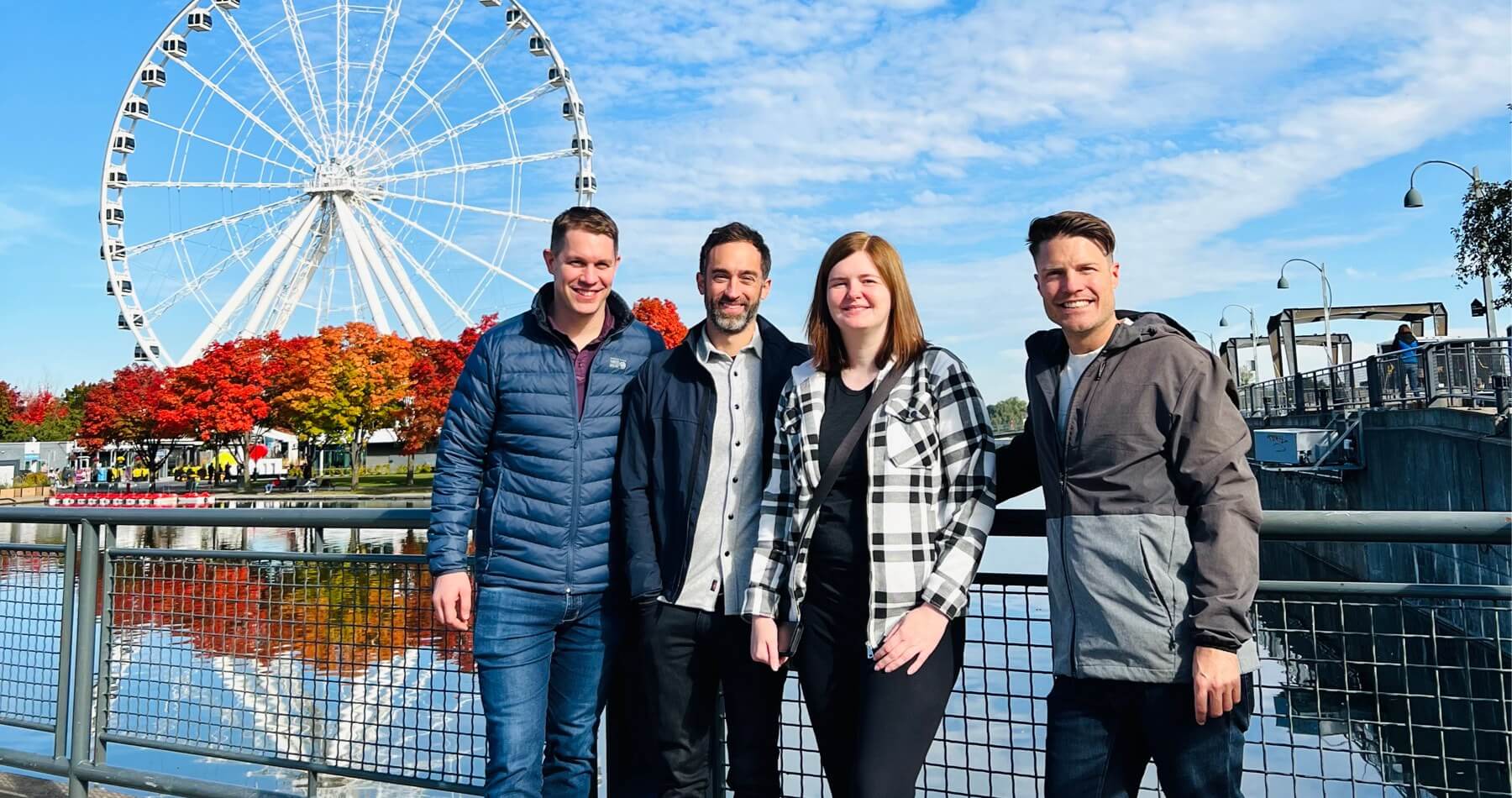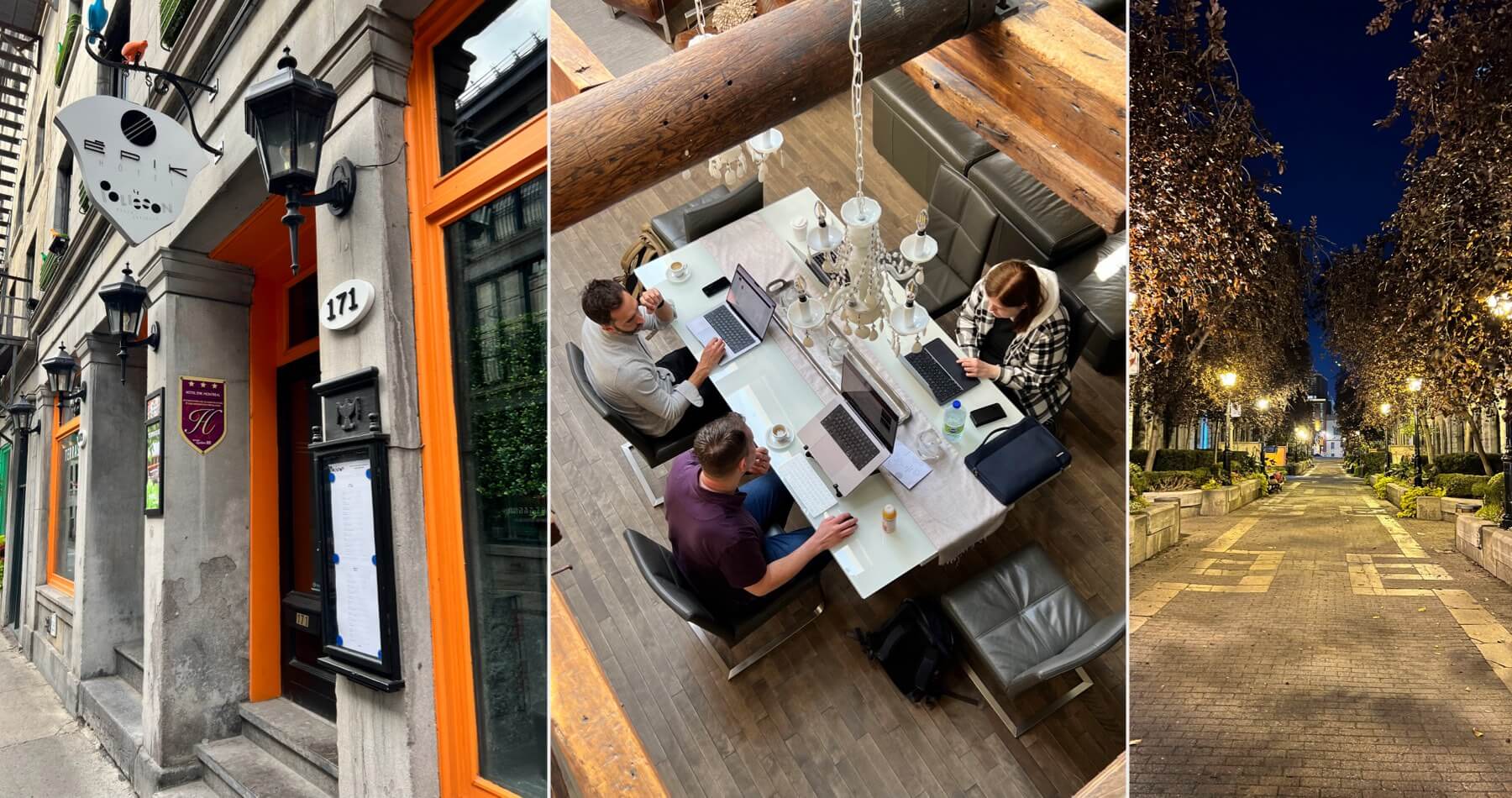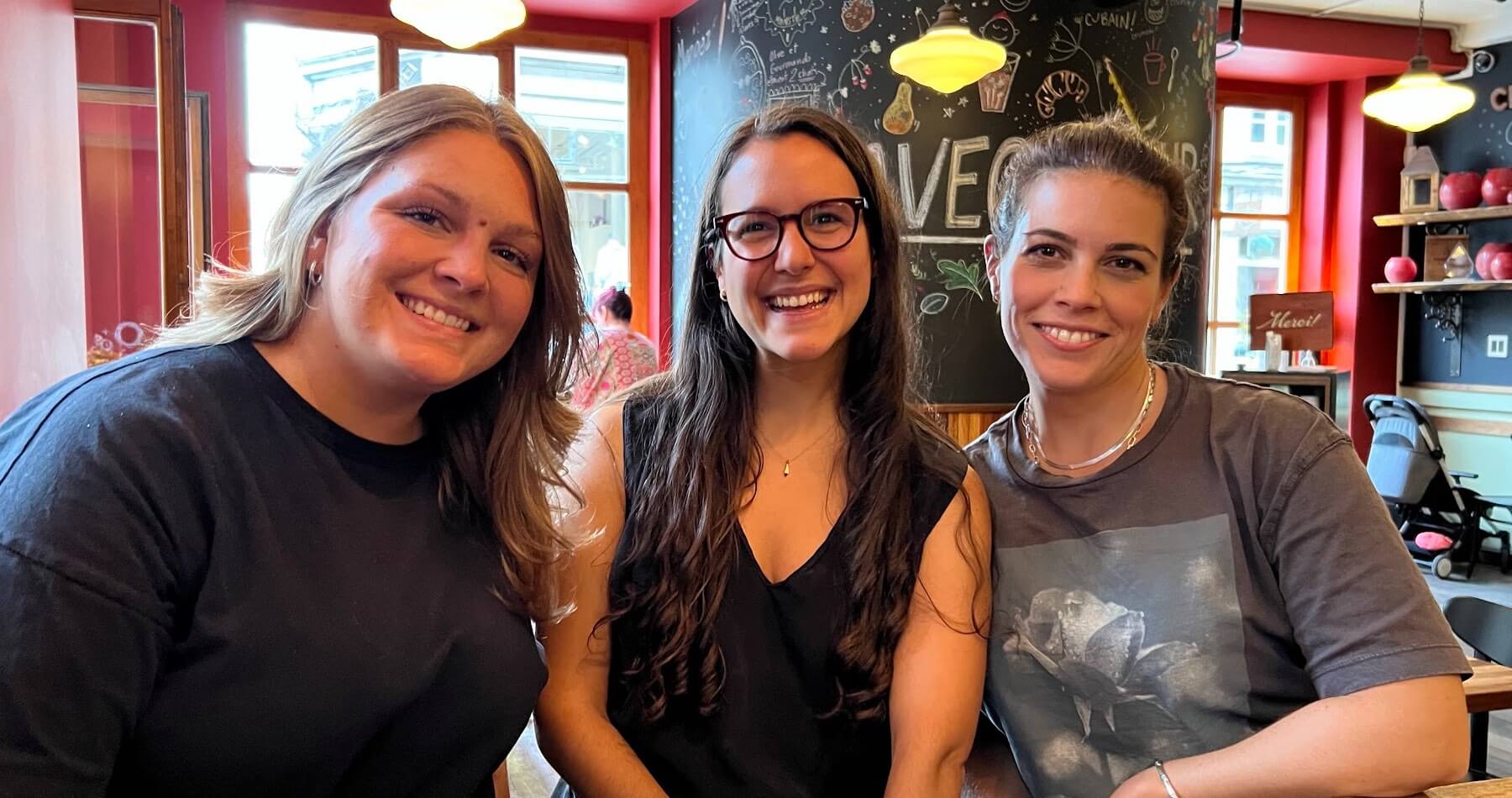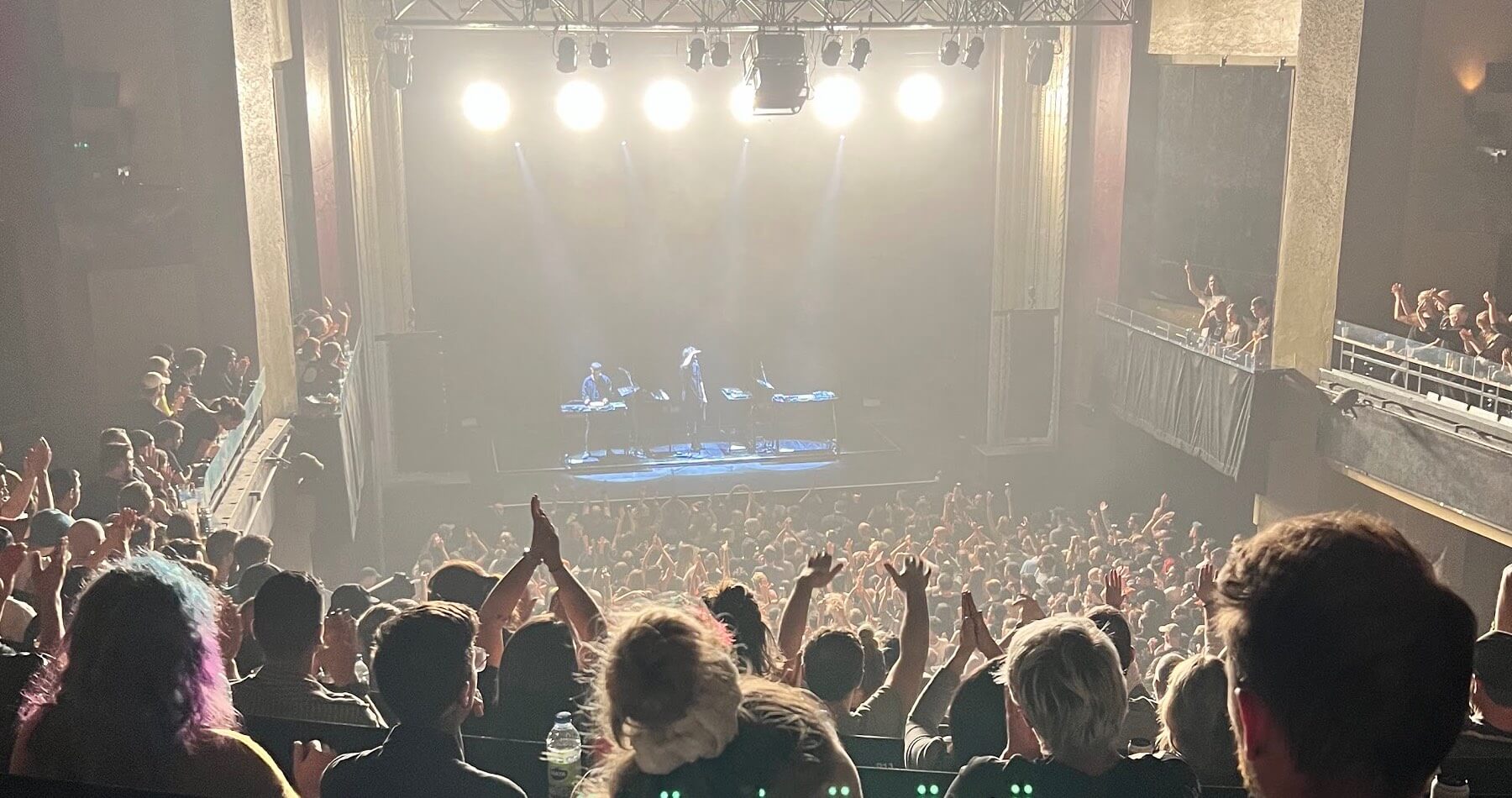How to plan a remote team retreat
The Transistor.fm team just got back from our first in-person retreat in Montreal. We’re a small team that works remotely, and we’d never all been in the same place at the same time, until last week.
Planning a retreat can be a daunting task, so we wanted to share our learnings in the hopes that it’ll be helpful for other remote teams out there.
Here are six recommendations for planning remote team retreats:
Chose the right location
Don’t put too much into the schedule
Have one main discussion topic per day
Plan group activities and outings
Meet some of your customers
Have fun
Choose the right location
The first step is to choose an awesome location that’s accessible to everyone on your team.
We picked Montreal because it was roughly the midway point between myself (in British Columbia) and Helen (in the UK). Jon is in Chicago, and Jason is in Ohio, so Montreal was a fairly quick plane ride for them.
But we also chose Montreal because it’s an incredibly vibrant city, full of french-Canadian culture, with lots to see and do.
We stayed at the Hotel Epik, in the heart of Old Montreal. This is a historic neighborhood close to the harbor. It’s full of charming cobblestone streets, quaint cafes, and lovely boutiques.
There were plenty of touristy activities for us to do, like visiting Notre Dame Basilica and the Old Port. But we also loved just walking around and exploring the neighborhood. We stumbled upon a hidden speakeasy, ate some of the best food of our lives, and even took a boat tour to the South Shore.
Don’t put too much into the schedule
When we were planning our retreat, we decided to keep our schedule relaxed:
9 am – wake up, have breakfast
10 am – everyone meets up to work together
11 am – group discussion
12:30 pm – lunch
2:00 pm – nap, alone time
6:30 pm – dinner together
8:00 pm – hang out as a group
This left plenty of time for us to explore the city, grab lunch together, and just hang out in our meeting room.
Have one main discussion topic per day
For each full day of the retreat, we planned on discussing one main topic. Here was our discussion schedule:
Day 1: Company update. I updated everyone on where we were financially (MRR, ARR, churn). I also showed some comparisons to other companies in the podcast industry. We also discussed questions like: Where are we headed? What bigger thing are we trying to accomplish?
Day 2: Product priorities. Here we had an opportunity to discuss new product features as a team. We focused on a few ideas, and then made sure to identify the next steps (for when we got home).
Day 3: Marketing and sales priorities. We evaluated our marketing/sales efforts over the past year and discussed ideas for the coming year. We also discussed possibly hiring more contractors in the marketing department.
Day 4: Open-air discussions. This was a time for team members to bring up issues, things they’d like to be more involved with, things they’d like to change, and any items that needed clarification (stock options, holiday schedule, etc).
"One thing that you notice in person, more so than when we're remote, is people's enthusiasm. When a particular topic comes up, whether that's certain features or certain future directions with the company, you can sense people's energy. It makes a big difference to feel that enthusiasm in real life." – Helen
Because Transistor is a software company (we provide podcast hosting and analytics), our product discussions ended up bleeding into multiple sessions. It was a totally different experience exploring different feature ideas together in the same room.
"We kept talking about those topics later in the day. So you can kind of keep the discussion going. Whereas if you're remote, you know, you might throw some things in Slack, but you can't explore it the same way; the excitement can fade away easier if you're not together. It was fun to just spitball and throw ideas back and forth." – Jon
Plan some group activities and outings
While we wanted to leave plenty of time for everyone to do their own thing, we also wanted to make sure we had some time to bond as a team.
So, a few members of our team planned a few group outings:
Attending a Montreal Canadiens NHL hockey game
Going to a Moderat concert together
Taking a boat ride tour of the harbor
Touring through the Notre Dame Cathedral
Watching a movie together
Later, when we reviewed the retreat, it was these shared experiences that became our highlights.
Meet some of your customers
One of my main goals was to meet with as many of our customers who lived in Montreal as we could.
I was blown away by how many people were willing to meet with us.
Helen and I met with Emy, Marilou, and Charlotte from MedPlan, which is a communications agency in Montreal. They've been using our private podcasting feature with their clients. After listening to their product feedback, we came back fired up to make the product even better.
There’s no substitution for seeing the folks who use your product face-to-face. It’s incredibly motivating to hear how they’re using your product.
If you can, try to schedule a few customer meetings into your retreat schedule. It’s a great way to get feedback and connect with your customers on a personal level.
Have fun!
Last but not least, make sure you have fun!
Our team spends most of our time in Slack, working on projects, and meeting over Zoom. A retreat gives you the opportunity to build a personal connection with your teammates. Having shared experiences together, whether it was attending a concert, going for a run, or sharing a meal, helped deepen the relationships we have with each other.
I hope these tips are helpful for you as you plan your own remote team retreat.
Cheers,
Justin Jackson
@mijustin




